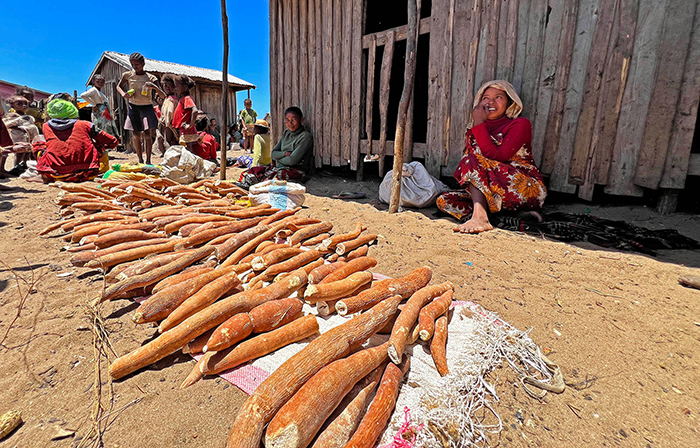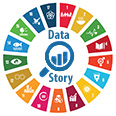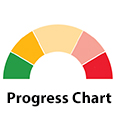Zero hunger

A woman sells produce in a village on the southernmost tip of Madagascar, where farmers are struggling to harvest parched crops.
© UN News/Daniel DickinsonHunger, food insecurity and malnutrition remain prevalent, calling for intensified efforts
After rising sharply from 2019 to 2021, global hunger, measured by the prevalence of undernourishment, persisted at nearly the same level for three years, affecting 9.1 per cent of the population in 2023 compared with 7.5 per cent in 2019. Between 713 and 757 million people faced hunger in 2023 —one in 11 people globally, and one in five in Africa. Moreover, an estimated 28.9 per cent of the world’s population, or 2.33 billion people, were moderately or severely food insecure in 2023 — 383 million more than in 2019.
Malnutrition among children under age 5 remains a significant concern, posing heightened risks to their growth and development. Globally in 2022, an estimated 22.3 per cent of children under age 5, or 148 million, were affected by stunting (being too short for their age), down from 24.6 per cent in 2015.
Based on current trends, 1 out of 5 (19.5 per cent) of children under age 5 will be affected by stunting in 2030. Some 37 million children (5.6 per cent) were overweight, while 45 million (6.8 per cent) experienced wasting, above the global target of 3 per cent by 2030. Three quarters of children under age 5 with stunting lived in Central and Southern Asia (36.7 per cent) and sub-Saharan Africa (38.3 per cent). More than half of those affected by wasting lived in Central and Southern Asia (56.2 per cent) and almost one quarter in sub-Saharan Africa (22.9 per cent).
To achieve Goal 2, significant efforts are needed to mitigate the impacts of climate change, conflict and economic crisis. Record-high food prices in 2022 worsened purchasing power and access to food, negatively impacting food security and nutritional outcomes. Increased global public expenditure on agriculture was at least one positive trend.
Accelerated action could bring productive and sustainable agriculture within reach globally
Productive and sustainable agriculture is key to ensuring the attainment and continued satisfaction of human needs in present and future generations. To assess global progress in sustainable agriculture, the Inter-agency and Expert Group on SDG Indicators adopted a new set of seven subindicators covering economic, social and environmental dimensions. Data from 2021 suggested that the world was at a moderate distance from achieving productive and sustainable agriculture (with a score of 3.4 out of 5) and had witnessed a slight improvement since 2015. Regional disparities were evident, however, with the highest score of 4.1 in Europe and Northern America compared to the lowest score of 2.6 in the LDCs. While more detailed analysis is required to investigate the root causes of varying rates of progress, evidence suggests that all regions urgently need to take sustained, concerted actions to improve productive and sustainable agriculture by 2030. They otherwise risk missing the target by a wide margin.
Status in achieving productive and sustainable agriculture, 2021 (score between 1 and 5)

Note: The score is derived using measures across economic, social and environmental dimensions. Scores are ranked based on five categories defined by the following criteria: productive and sustainable agriculture already achieved (4.5 to 5.5), close to achieving productive and sustainable agriculture (3.5 to <4.5), at a moderate distance to achieving productive and sustainable agriculture (2.5 to <3.5), far from achieving productive and sustainable agriculture (1.5 to <2.5), and very far from achieving productive and sustainable agriculture (1 to <1.5).
Small-scale food producers are vital in fighting hunger but earn less than half the income of larger-scale operations
Small-scale food producers play essential roles in agricultural and food production systems, enhancing resilience and fighting hunger. Despite their significant contributions, however, they are often among the most vulnerable groups in rural areas and within the broader agrifood system. In 95 per cent of countries with available data, the average annual income of small-scale producers is less than half that of larger-scale producers. This income disparity persists across countries, regardless of income level. Small-scale food producers headed by men typically generate higher incomes than those headed by women. The latter had incomes that were less than 70 per cent of those earned by the former in nearly 50 per cent of countries with available data.
Global government spending and aid for agriculture surge amid economic challenges
Government spending reflects national priorities and can directly respond to economic and social challenges such as the COVID-19 pandemic, natural disasters or inflation. Between 2015 and 2022, global government spending on agriculture increased steadily, reaching a record high of $749 billion in 2022. Government expenditure on agriculture relative to the sector's GDP contribution, as measured by the agriculture orientation index, declined from 0.5 in 2015 to 0.43 in 2021 before rebounding to 0.48 in 2022. The pandemic contributed to the fall as government resources were allocated to other sectors.
From 2015 to 2022, the volume of aid for agriculture provided to developing countries increased by 47.2 per cent, from $12.3 billion to $18.1 billion (in constant 2022 prices). A 33 per cent increase from 2021 to 2022 was primarily driven by agricultural development projects and initiatives in agricultural policy, administrative management and financial services. Notably, Africa accounted for 65 per cent of the increase in 2022, mainly due to non-concessional loans for agricultural development projects from the Islamic Development Bank in Egypt.
Agriculture orientation index, 2015 and 2022

* Excluding Australia and New Zealand.
Nearly 60 per cent of countries faced moderately to abnormally high food prices in 2022
Globally, the proportion of countries facing moderately to abnormally high food prices rose sharply in 2022, reaching a new record high of 58.1 per cent. This represented a nearly fourfold increase from the 2015-2019 average level of 15.2 per cent. In Central and Southern Asia and Eastern and South-Eastern Asia, the share of countries facing moderately to abnormally high food prices in 2022 was lower than the peak in 2020 but remained higher than the yearly average and the 2015-2019 average. The share steadily increased in sub-Saharan Africa between 2020 and 2022. Major disruptions to logistics and food supply chains after war broke out in Ukraine resulted in higher food and energy prices, particularly during the first half of 2022. The war also exerted strong upward pressure on fertilizer prices, adding uncertainty to farmer planting decisions.
Proportion of countries by region affected by moderately to abnormally high food prices, 2015-2019 average, 2020 and 2022 (percentage)


